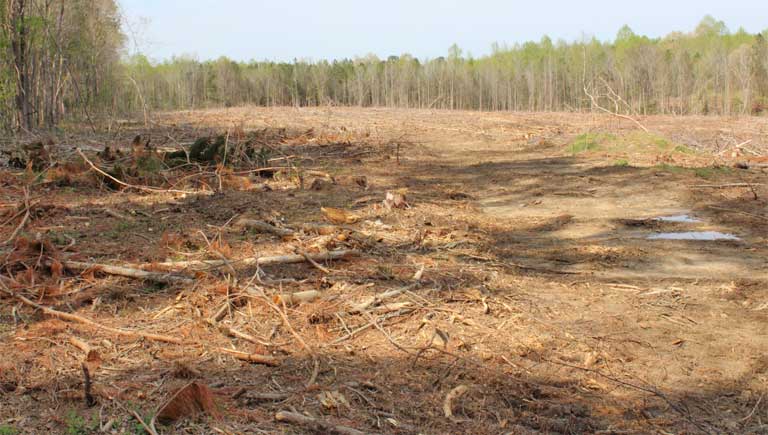
In the early spring of 2019, investigators tracked logging trucks from a mature hardwood forest en-route to a North Carolina wood pellet manufacturing facility. The clear cut from which the trees were removed is located in the Tar-Pamlico River basin, alongside Sandy Creek, which feeds into North Carolina’s Pamlico Sound. Credit: Dogwood Alliance.
This story of mine posted during the same week that The New York Times reported that the Trump Administration had reversed or was in the process of reversing 99 environmental regulations designed to protect our air, water, wildlife, national parks and fragile ecosystems. Now, the EPA is set to issue a new ruling that very well could imperil the nation’s privately held woodlands from coast to coast. If the US defines the burning of wood pellets — a focus of my reporting for more than two years now — as carbon neutral, we are likely to see utilities shift in parts of the country to burning wood for energy. Some of the wood will come tree farms grown for wood products. But too much will come from established forests and thriving ecosystems.
My story focuses on a letter to Congressional leaders on House and Senate environmental committees from 200 scientists in 35 states urging them to look closing at the peer-reviewed science and protect the nations woodlands from the carbon-neutral designation.
The science could not be more clear. Burning wood for energy is not carbon neutral in any acceptable timeframe given the accelerating pace of global warming. Trees, whether in the tropics, temperate zones or boreal forests, remain the most reliable way of pulling greenhouse gases from the atmosphere and storing it in their leaves, limbs, trunks and soil as long as those trees are standing. In no sane world would we be clear-cutting forests for the wood to be pelletized and burned for energy. Yet this form of energy, with the carbon neutrality loophole (see story for details) is increasing across Europe, the United Kingdom and now Asia.
“The only option we have right now to avoid climate disaster is [to conserve] the natural world,” Bill Moomaw, co-author of the letter to Congress and a leading forest ecologist from Tufts University, told me in an interview for this story. “Forests are the one thing we have the greatest potential to protect. If we let them grow, they will store more and more carbon.”

Pine forests cut to provide wood pellets for power plants are replanted, according to the forestry industry, so woody biomass as an energy resource could technically be called carbon neutral, but only over the long term. It takes many decades for new trees to mature and for the carbon equation to balance out. Photo credit: ChattOconeeNF on Visualhunt.com / CC BY.

